With our 2023 class of “Creative Visionaries,” we salute the news media industry’s creative directors, art directors, photo editors, multimedia designers and even a CEO and publisher. Whether designing a magazine cover, creating a layout for a multi-page publication or developing interactive graphics, our creative colleagues bring storytelling to life — curating captivating images, informative graphics, copy and, increasingly, video and audio. Their talents for communicating the news in visually intriguing ways help the public better understand and fully experience our stories. E&P celebrates their passion for news and creative accomplishments.
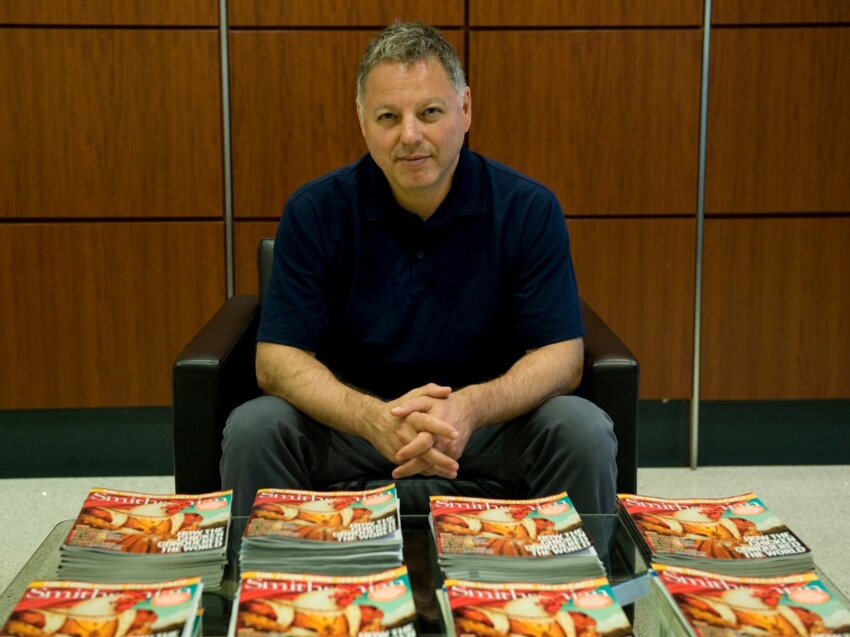
Michael Caruso
CEO and Publisher
The New Republic, New York City
How long have you been in creative/visual journalism, and how did you get your start?
I got my start as a messenger at The New Yorker, where I was able to read drafts of stories as they went through its famous process, from first drafts to edited stories through fact-checking and Mr. Shawn's notes. It was the best possible introduction to the world of ideas from the very lowest rung of the ladder.

What gets (and keeps) your creative juices flowing?
Journalism these days makes the New York Times Sunday crossword look like a breeze. You have to put together so many parts — and they often don’t seem to fit. Often, the answer is to reinvent the puzzle and create a different way of presenting what readers think journalism is. At Smithsonian, I did that by inventing The American Ingenuity Festival and Future Con. At The New Republic, I’m trying to do it with ambitious, activist live events such as creating The Banned Bookmobile Tour of 2023, an anti-censorship campaign to send bookmobiles to the states that have banned the most books.
What advice do you have for young professionals starting out in the creative field?
There is no better or harder place to be creative than journalism. It’s demanding, stressful and frustrating. You have to fight legacy issues and skepticism, and at the same time, you’re experimenting with new ideas. Be a participant, look around constantly at what everyone is trying, appreciate it — and figure out how to do it better.
What do you see as the most important trend or facet of visual journalism/media creative today?
The most important trend is artificial intelligence, which is also the most dangerous. AI-generated videos are already flooding YouTube, often packed with conspiracy theories and misinformation, and some publications are starting to produce AI-generated stories. There are already serious trust issues with journalism in the public eye, and this trend has the potential to make it much worse.

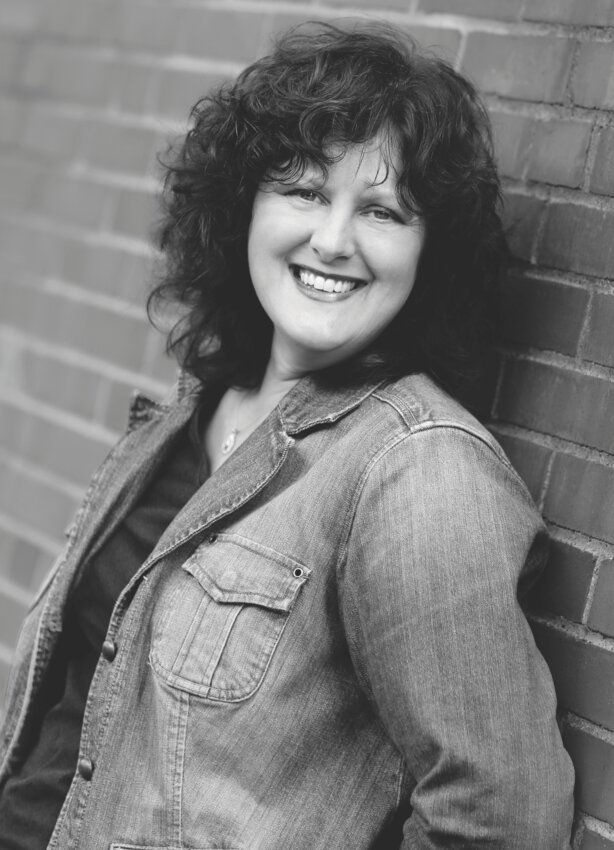
Carla Witt Ford
Art Director, Senior Designer and Photographer
New South Media, Granville, West Virginia
How long have you been in creative/visual journalism, and how did you get your start?

I have been a professional photographer for 41 years and a designer for 15. I started working in the creative industry straight out of college as a subcontractor for the U.S. Department of Energy. I spent most of my career there as their photographer and then photographer/videographer. I also taught introductory and advanced photography at a local university for several years. Now, I work with New South Media, a publishing company designing several print magazines annually, as well as specialty publications and photography projects.
What gets (and keeps) your creative juices flowing?
Being out of the office, away from my computer. Whether in the middle of a garden or the middle of the week, seeing things from another point of view — seeing what is going on in the world rather than the narrow focus of working on a project — helps me to bring freshness to that project.
Also, working with my editor, writers and other graphic designer on projects, bringing their vision to life, gives me great satisfaction.
What advice do you have for young professionals starting out in the creative field?
Have many things you are good at. Creating a wonderful piece is fantastic, but you must also have communication skills to promote it. Having a little bit of a marketing background will help when it comes to self-promotion. Learning something new is exciting, and satisfying my hunger for knowledge has always worked for me to keep my work purposeful and vibrant.
What do you see as the most important trend or facet of visual journalism/media creative today?
I have always been a “start with the classics” kind of photographer/designer. Trends come and go, and I feel they “date” your work. The new tools we as designers are presented with almost weekly can enhance our work or help us with workflow, but they are accessories to add to the toolbox.

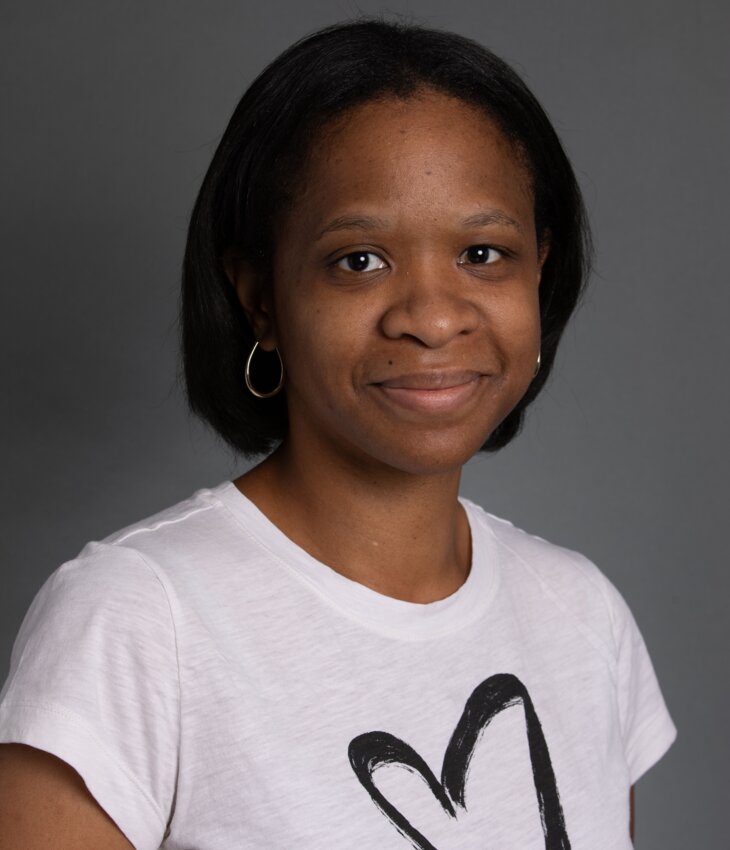
Janeen Jones
Design Editor
Center for Public Integrity, Washington, D.C.
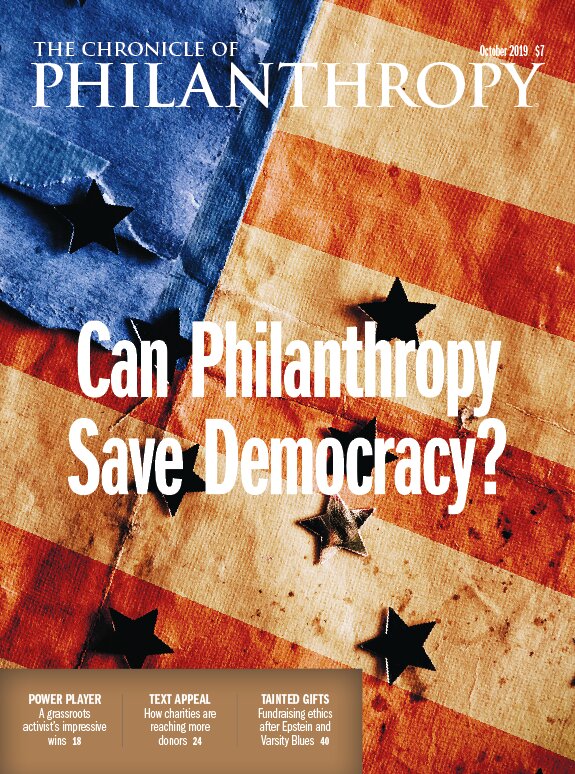
How long have you been in creative/visual journalism, and how did you get your start?
I've been doing design work exclusively since 2009. I started as a copy editor for a newspaper a few years before, and in that position, I worked on some print layouts. I really enjoyed the creative aspect of design work, so I decided to focus on just that. That’s when I left the editorial side behind and decided to focus on just graphic design.
What gets (and keeps) your creative juices flowing?
Seeing other great designs. When I see another great design, my eyes open wide, and I immediately start to dissect what I like about it in my mind. And I’m not above taking screenshots of a great illustration I see online or taking a photo with my phone of a billboard I see while traveling. I have a folder on my computer desktop labeled Design Examples where I drop all the fantastic things I see. When I’m stuck on a project, I go to that folder to inspire me.

What advice do you have for young professionals starting out in the creative field?
Take design inspiration from anywhere, not just in the media. There is inspiration everywhere you look — in fashion, architecture and even at the grocery store.
What do you see as the most important trend or facet of visual journalism/media creative today?
I don’t like trends, because trends come and go. But I think one of visual journalism’s most important fundamentals is making effective design choices that will accurately communicate your idea. Make color and typography choices that support the idea you want to convey to your audience. Choose photos and illustrations that match the story’s tone because, ultimately, it doesn’t matter how great your design looks if it doesn’t accurately represent the story or idea you are trying to convey.
View the Center for Public Integrity's redesigned website below:

Bill Lackey
Photojournalist
Springfield News-Sun/Cox First Media, Springfield, Ohio
How long have you been in creative/visual journalism, and how did you get your start?

It all started in college at Eastern Kentucky University. I was studying to be an industrial engineer, and I made friends with a fellow student who worked as a photographer for the college newspaper. He loaned me a camera and asked me to shoot an assignment for him. Well, that was all it took. The following semester, I switched my major to journalism and started shooting photos for the college paper. Now, 32 years later, I’m still doing it. I started at a small paper in the hills of eastern Kentucky, and after a couple stops at small daily papers in London, Ohio and Middletown, Ohio, I’m at the Springfield News-Sun, where I’ve been for 23 years.

What gets (and keeps) your creative juices flowing?
In Springfield, I had the good fortune to work with a great photojournalist and teacher, Marshall Gorby, who taught me that you don’t only take photos with your eye but also your heart. He showed me the importance of building a relationship with your subjects. Sometimes, you may only have a few minutes, but building a connection is important.
Today, I have photographed every fair, festival and fire in Springfield and Clark County for the past 23 years, and I love to show the readers something in a different way. I love to make the readers stop and think about a photo or series of photos and see someone or something different light.
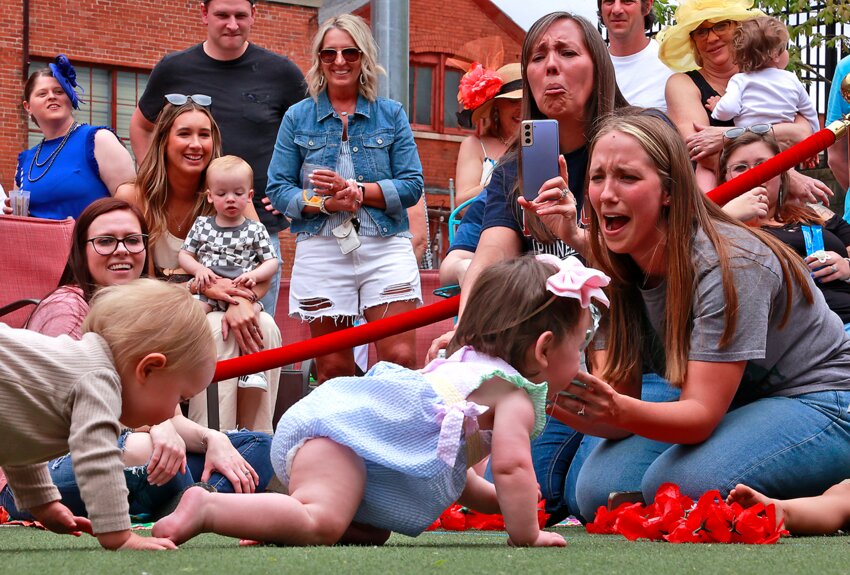
What advice do you have for young professionals starting out in the creative field?
My advice to young professionals is: Don’t set your vision so high that you miss some of the smaller things in your community. Everyone wants to cover the big news stories, but don’t forget about the little stories. Treat every story as if it were the biggest story of your career.
What do you see as the most important trend or facet of visual journalism/media creative today?
I think the most important trend facing visual journalism today is the elimination of the photo staff. I have been fortunate to work for a company that still values visual journalism, but there are media companies across the country that have eliminated their entire photo staff for freelance or citizen journalists with a camera phone.

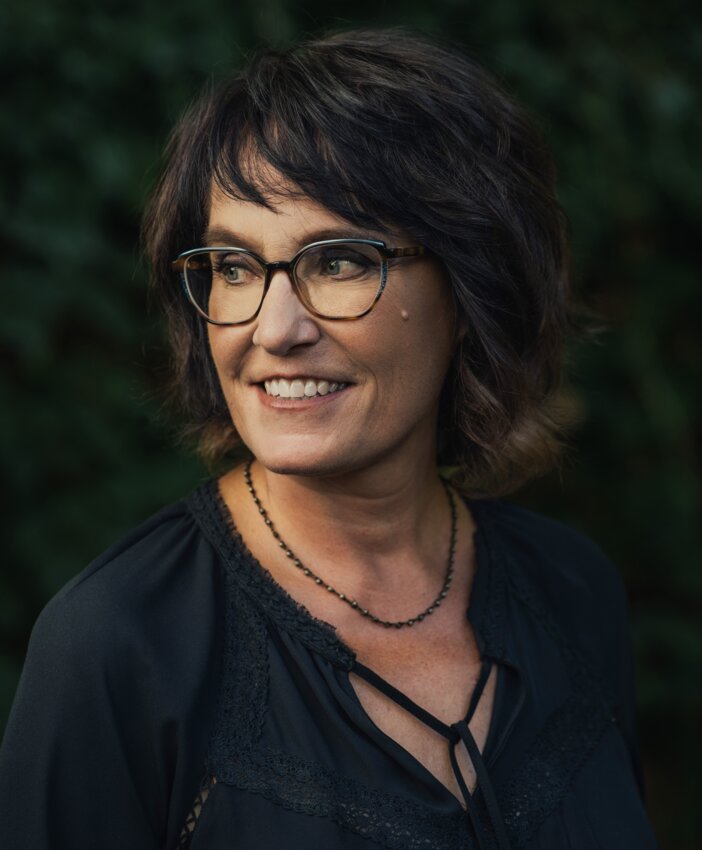
Janet Michaud
Head of Publishing Design & Visual Storytelling
McKinsey & Company, New York City
How long have you been in creative/visual journalism, and how did you get your start?

I graduated from the Newhouse School of Public Communications at Syracuse University (SU) in 1992 and accepted my first journalism job soon after. That’s 31 years (yikes!). I majored in magazine journalism, with minors in music and anthropology and a concentration in graphic arts. Two pivotal things happened in my senior year that led to my career in visual journalism. Gannett came to campus to recruit. I had a writing portfolio, as well as one in graphic arts. I was unsure which lane I wanted to pursue, and the recruiter said there were more jobs in graphics at the time. This led to interviews at a couple of Gannett newspapers, one of which I accepted with the Utica Observer-Dispatch. The other turning point in my senior year was assisting at the Society of News Design competition, which was held at SU. I fell in love with editorial design and visual journalism on the spot.
What gets (and keeps) your creative juices flowing?
Being in the moment because it declutters my mind. Nature forces me to be in the moment. I love hiking and other outdoor activities. I find the inexplicable expanse and beauty of the mountains and the ocean captivating. Music can keep me in a moment, too. I am/was a classically trained clarinetist. Being able to nail runs, travel with rhythms, and anticipate my entrances took every ounce of my focus. Now, I try to see as much live music as possible because I find it immersive. I'd be remiss if I didn’t say good design that effortlessly communicates a message and tone. My family keeps my creative juices flowing, too. My two boys are crazy passionate about baseball, which is a very hard and humbling sport. I find their drive, resiliency and fearlessness inspiring. And my husband, who is a selfless partner, keeps me laughing and is a model of resilience himself.
What advice do you have for young professionals starting out in the creative field?
Don’t be afraid to take chances. If you fail, well, you tried and learned something and get to take another swing at it tomorrow. If you succeed, there's no other feeling like it. As someone who has worked on tight deadlines for a long time, another piece of advice is that planning creates the space for spontaneity and innovation. Last one, I promise … being collaborative is much more fun than assuming you know everything. Be open to sharing and receiving ideas and feedback.
What do you see as the most important trend or facet of visual journalism/media creative today?
Generative AI. I’m equally fascinated and terrified by how it could potentially change storytelling.

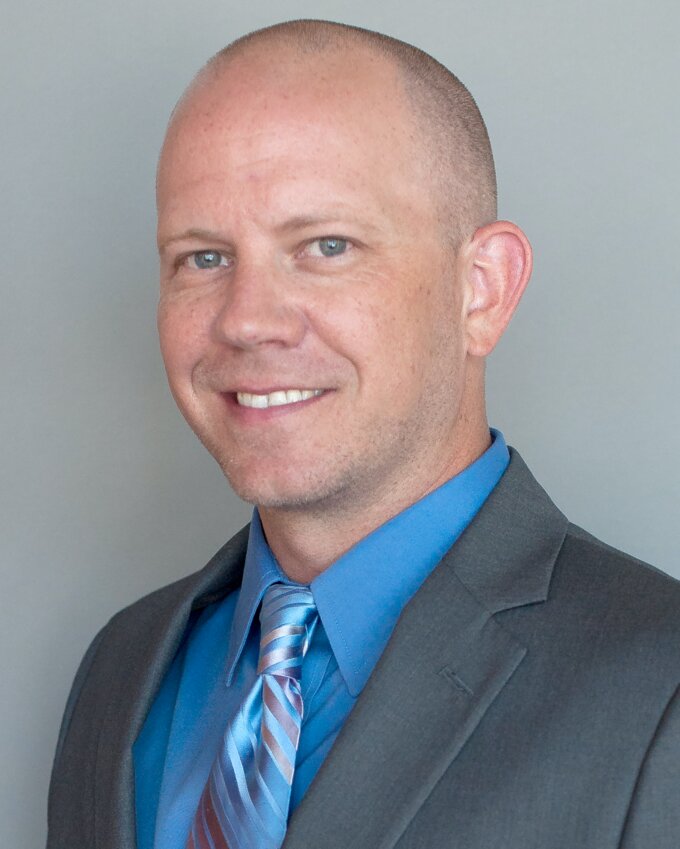
Derek Sullivan
Creative Director
Community Impact, Pflugerville, Texas
How long have you been in creative/visual journalism, and how did you get your start?
I’ve been working as a graphic designer in some capacity for over 20 years. Early in my career, I worked for a web startup, an ad agency and as an in-house designer in various industries. In 2007, I began my journey with Community Impact (CI) as a graphic designer and gradually advanced to my current position, managing the creative team at CI.

What gets (and keeps) your creative juices flowing?
I’m personally inspired by nature and a good cup of coffee in the morning. At CI, I have the privilege of working with an extremely talented group of designers, journalists, salespeople and business experts. I’m inspired every day just by being in the same room with these folks. Innovation is one of our core values, so it shows up in everything we do — from brainstorming infographics for one of our 39 publications to meeting with a team of managers to resolve complex production issues. Just being around such creative people keeps me motivated.
What advice do you have for young professionals starting out in the creative field?
My advice for young creatives in the media industry is always to pursue their passion and curiosity. Embrace every opportunity to learn and expand your skill set, whether mastering new software, experimenting with different styles or staying updated on the latest trends. Find a good place to work where you're surrounded by other creative people. Finally, embrace collaboration and feedback because teamwork almost always leads to better ideas.

What do you see as the most important trend or facet of visual journalism/media creative today?
Visual storytelling plays a significant role in keeping our readers engaged with our local community news. Infographics, maps and photography have always been essential components of our journalism. Recently, at CI, we’ve really embraced the concept of simplicity, not only in our design and writing but also in our communication across the organization. We are calling this initiative “CI Simple.” The notion of conveying a complex story in a straightforward, simple manner makes perfect sense when you consider our audience. We live in a fast-paced world, and people are busier than ever. Simplifying ideas and designs to their most direct form is the key to capturing people's attention and maintaining engagement.


Amanda Whitlock
Photo editor and research
Forbes, Jersey City, New Jersey
How long have you been in creative/visual journalism, and how did you get your start?
I have been in media since 2002, when I got my first photojournalism job for our student-run newspaper, The Daily Egyptian, at SIU-Carbondale in Carbondale, Illinois. I then interned with The Post-Dispatch in St. Louis, Missouri. I spent many years freelancing before taking a photojournalist position in 2008 with a then-family-owned newspaper, The NewsTribune, in La-Salle-Peru, Illinois. I worked my way to photo editor before leaving the newspaper in 2013 to take a break from journalism. In 2018, I re-entered our profession at Tribune Publishing (owner of the Chicago Tribune) as a photo editor. I took a buy-out in 2021 and connected with Forbes in 2023. Being a photo editor/photojournalist isn't an easy job, and there were times when I couldn’t find work or was overworked and burnt out. The journey from start to end is an ever-evolving story, but right now, I am really happy and thankful to be working where I am.
What gets (and keeps) your creative juices flowing?
Other creators and journalists consistently inspire me. Well-filmed/animated/written TV shows and cinema fuel me every day. Shows like Abbott Elementary, Letterkenny and The Great North blow me away, honestly. Everything ever made by Hayao Miyazaki, co-founder of Studio Ghibli, which is my favorite movie. And lastly, I’ve had a soft spot for comics and graphic novels from a very young age. My uncle John Whitlock, an animator, shared what I consider to be amazing collaborations in creativity with me all my life. Currently, my favorite comic series is “Saga,” written by Brian K. Vaughan and illustrated by Fiona Staples. Seeing the world through the lens of another is a privilege, and I am honored to be able to do it as a job. As an editor, I keep those who are out there creating incredible works of journalism and art at the forefront of my mind. Without them, I wouldn’t have a job or purpose.
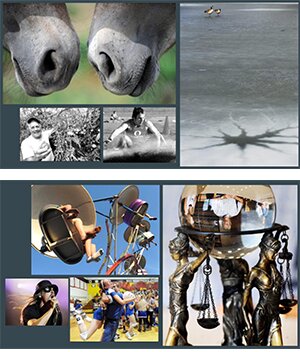
What advice do you have for young professionals starting out in the creative field?
As a media professional, I advise young creatives to create your path if there isn’t one available to you. Pursue your passions and discover a way to express them. Find other people who share the same interests and collaborate. None of these ideas apply to you. Send a person you admire an email, and ask those questions. Chances are, at one point, they had the same questions as you. Don’t let rejection discourage you; keep going. It’s also crucial to keep learning and expanding your skill set, as media professionals are often expected to be versatile.
What do you see as the most important trend or facet of visual journalism/media creative today?
I’ll keep a close eye on the influence of Artificial Intelligence on innovative creation and editing in visual journalism. A facet I would highlight is nonprofit news organizations dedicated to filling news deserts and any efforts to protect local news. I am optimistic about the future of both journalism and creatives in general. I spent last year as an art teacher to K-5th grade children before coming to Forbes. Given the right tools and support, I don’t think we will lack originality or ingenuity in the creative fields in the future.

 Robin Blinder is E&P's associate publisher and vice president of content. She has been with E&P for three years. She can be reached at robin@editorandpublisher.com.
Robin Blinder is E&P's associate publisher and vice president of content. She has been with E&P for three years. She can be reached at robin@editorandpublisher.com.
Comments
No comments on this item Please log in to comment by clicking here